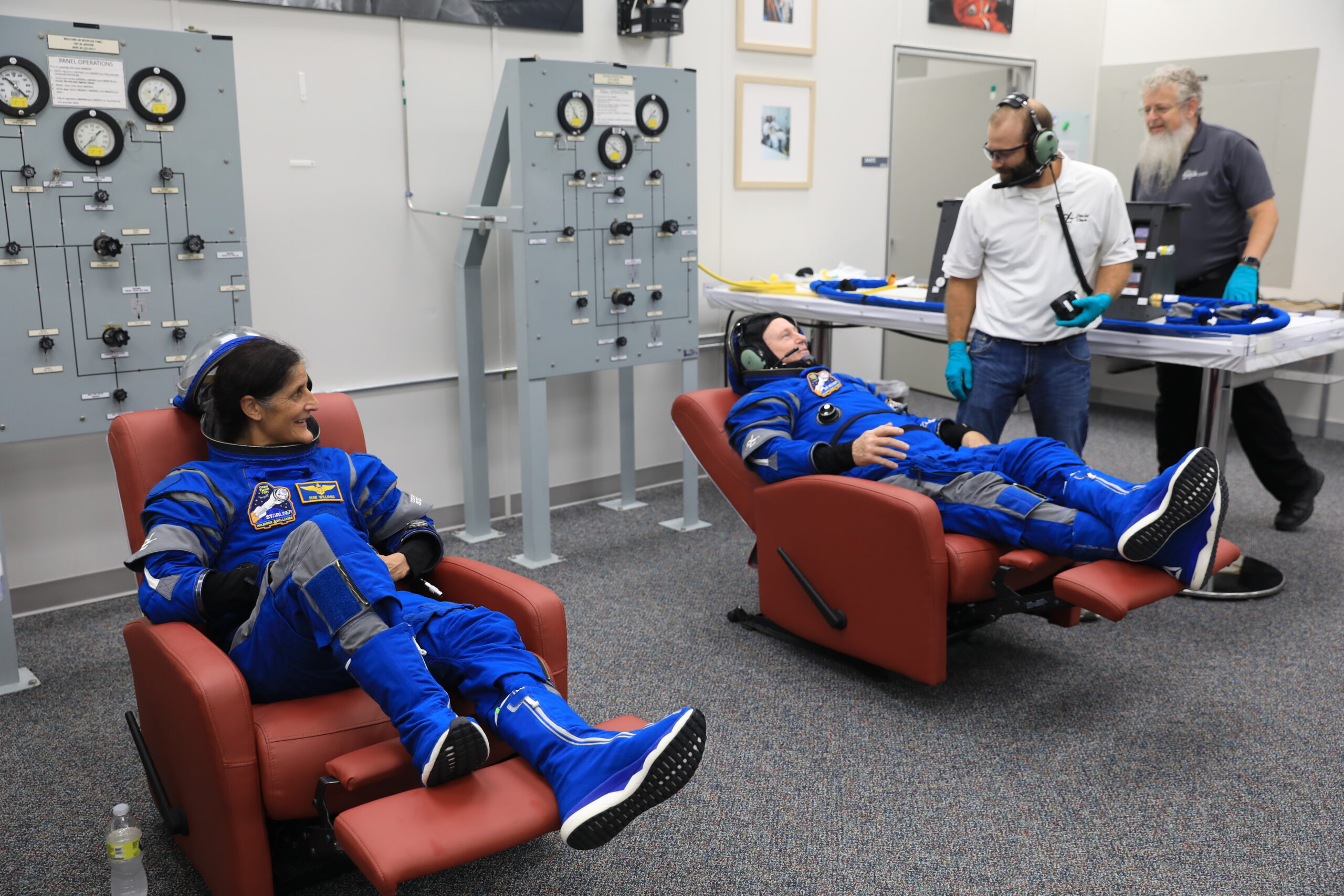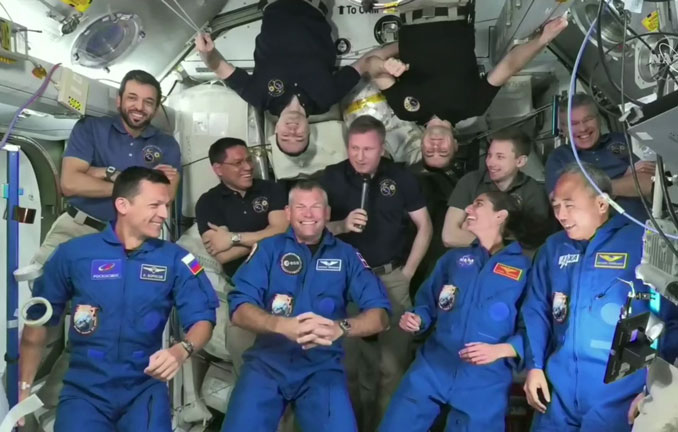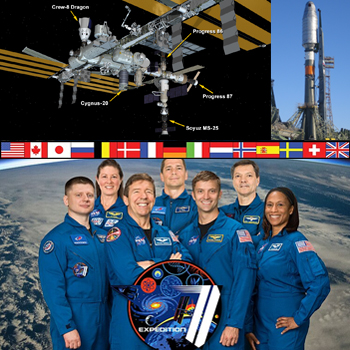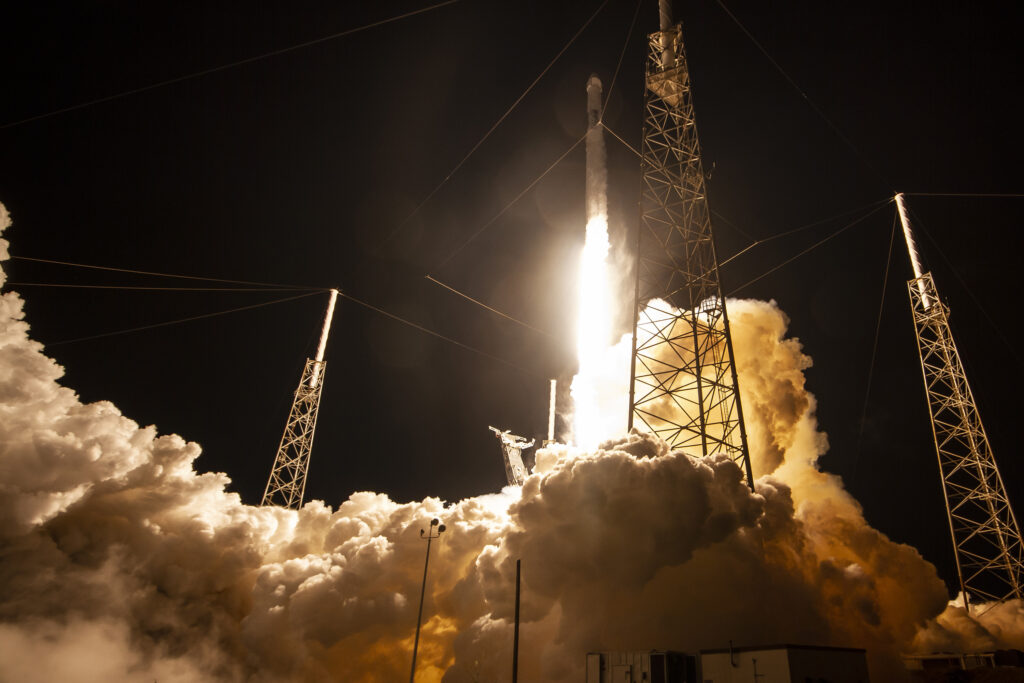
While science often occupies the crew schedule aboard the International Space Station, upkeep of the orbiting complex is just as important to ensure the longevity of microgravity operations. On Tuesday, the Expedition 71 septet spent another full day conducting maintenance on scientific payloads and life support systems.
NASA Flight Engineer Jeanette Epps kicked off the day preparing measurement aids for crew quarter inspections that were conducted later in the day. Afterward, Epps charged spacesuit batteries in preparation for a round of spacewalks this summer, then moved into the Tranquility module to collect and analyze samples from the Water Processor Assembly, which provides clean, drinkable water for crew members after being recycled from multiple sources.
After Epps prepped the measurement aids, NASA Flight Engineer Matthew Dominick entered the crew quarters to take airflow measurements from the intake ducts. Dominick then continued orbital plumbing work he began yesterday, removing and replacing some hoses, the air filter, and wastewater filter in the station’s toilet. He completed the day by reactivating the bathroom and stowing tools used for the repairs.
Though maintenance was at the forefront of today’s microgravity work, Flight Engineer Mike Barratt did have some time to collect biological samples for ongoing human research. CIPHER, or the Complement of Integrated Protocols for Human Exploration Research, is a suite of total-body experiments that help researchers pinpoint how the human body reacts to long-duration missions in space. Through the collection of biological samples, scientists can examine changes to cartilage health, inflammation and immune function, kidney health, and more.
After his human research activities, Barratt moved into the Destiny laboratory module to service the Cold Atom Lab, which chills atoms to near absolute zero to observe the fundamental behaviors and quantum characteristics that are difficult or impossible to probe at higher temperatures. Barratt reconnected power and data cables and the filter to the quantum physics device.
Following Dominick’s intake duct measurements in the morning, NASA Flight Engineer Tracy C. Dyson spent the afternoon in the crew quarters taking additional measurements. She was also joined by cosmonaut and current space station Commander Oleg Kononenko and Flight Engineer Nikolai Chub to complete some on orbit medical training, reviewing procedures that would need to be taken in the event an emergency were to occur on station that requires the use of CPR.
In the Zarya module, Flight Engineer Alexander Grebenkin of Roscosmos assessed lighting conditions throughout the segment, then ran a distillation cycle on the wastewater processor.
On Earth, NASA, Boeing, and ULA (United Launch Alliance) teams continue working remaining open tasks in preparation for the agency’s Boeing Crew Flight Test to the International Space Station. The teams now are targeting a launch date of no earlier than 4:43 p.m. EDT on Tuesday, May 21, to complete additional testing. For more information, please visit the CFT blog.
Learn more about station activities by following the space station blog, @space_station and @ISS_Research on X, as well as the ISS Facebook and ISS Instagram accounts.
Get weekly updates from NASA Johnson Space Center at: https://roundupreads.jsc.nasa.gov/
Get the latest from NASA delivered every week. Subscribe here: www.nasa.gov/subscribe




